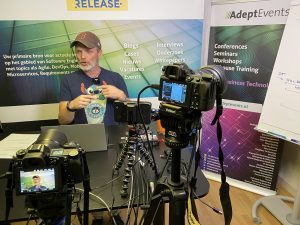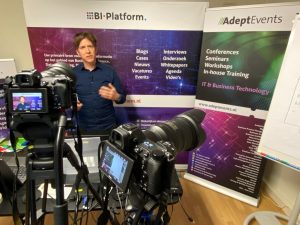Thomas Frisendal
TF Informatik
[This is a post-conference workshop to our Data Warehousing & BI Summit where Thomas Frisendal will deliver a keynote as well. You can register for this workshop separately via this page or, with a discount, in combination with the conference via the conference registration form.]
Since Google announced its Knowledge Graph solution in 2012 graph database technologies have found their way into many organizations and companies. The graph database market has exploded over the last 10 years with at least 50 brand names today. International Standardization is coming – very soon SQL will be extended by functionality for property graph queries. A full international standard for property graphs, called GQL, will surface in late 2023 (from the same ISO committee that maintains the SQL standard).
Graph databases are generally quite easy to understand – the paradigm is intuitive and seems straightforward. In spite of that, the breadth and power of the solutions, one can create, are overwhelmingly impressive. The inclusion of graph technology dramatically enlarges the scope of analytics by enabling semi-structured information, semantic sources such as ontologies and taxonomies, social networks as well as schema-less sources of data.
At the same time graph databases are much better suited for doing complex multi-joins analyzing large networks of data, opening up for advanced fraud detection etc. The Panama papers is the best-known example.
Finally graph theory is a mathematical discipline with a long history, which among other things have created graph algorithms for many complex analytics, such as clustering, shortest path, page rank, centrality and much more.
Learning Objectives
Who is it for?
Although code examples (in graph database query languages) will be used frequently, the audience is not expected to be proficient database developers (but even SQL experts will benefit from the workshop).
The virtual seminars and workshops will be offered through an online meeting platform, usually Webex or Zoom, from our video studio. The virtual classroom is equipped with multiple professional cameras and microphones and we have a two person crew available so that we can offer a similar experience to that of the traditional classroom and, more important, still offer adequate interaction with the speaker.
 The presenter / trainer will still use his Powerpoint, combined with flipchart and paper, virtual whiteboard and physical whiteboard and will be accompanied by a operator / moderator at the scene. The presenter does not have to worry about technical issues such as switching, splitting, microphone settings and such but can fully focus on the course material and on engaging with the online attendees.
The presenter / trainer will still use his Powerpoint, combined with flipchart and paper, virtual whiteboard and physical whiteboard and will be accompanied by a operator / moderator at the scene. The presenter does not have to worry about technical issues such as switching, splitting, microphone settings and such but can fully focus on the course material and on engaging with the online attendees.
 Asking questions and the speaker answering them can therefore be done just like you are used to in a regular classroom.
Asking questions and the speaker answering them can therefore be done just like you are used to in a regular classroom.All of the above is to ensure that it does not become an impersonal one-way webinar but an interactive virtual classroom setting.
Those attending an online event or a hybrid event with the online meeting platform will be sent an invitiation with the meeting hyperlink and instructions a few days before, so well in advance of the course.
Practically all of our seminars and workshops can be offered as an In-house course for your company exclusively. We can tailor with extra focus on specific topics that apply to your organization. Also available in online format or in face-to-face format with live video stream.
Making Data Modelling a Vital Technique This workshop by Alec Sharp introduces concept modelling from a non-technical perspective, provides tips and guidelines for the analyst, and explores entity-relationship modelling at conceptual and logical levels using techniques that maximise client engagement and understanding.
April 3, 2025 (half day)
Utrecht
Stappenplan en best practices Organizations need data science, self-service BI, embedded BI, edge analytics, and customer-driven BI. This seminar provides guidelines, roadmaps, design criteria, tips, design rules, use cases, case studies, and practical examples for developing a new future-proof data architecture.
May 14-15, 2025
Utrecht
Business Intelligence, Data Warehousing, Big Data and Data Management Independent portal on Business Intelligence, Data Science & Analytics, Data Warehousing, Data Management and Big Data in The Netherlands. BI-Platform offers a wealth of content, such as blogs, interviews, videos, whitepapers and more.
